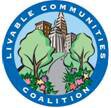
“We all live downstream,” says Canadian geneticist and environmentalist Dr. David Suzuki.
Downstream, downhill, downwind: What we do to each other, it turns out, we do to ourselves.
The consequences have been disastrous for some, as a current series of stories in the The Atlanta Journal-Constitution reminds. The series debuted Sunday February 21 with the front-page story “Runaway runoff” and continued through Monday, March 1.
It argued that “explosive development” and years of failure to adequately control runoff from that development have combined to turn “unremarkable” rains into major problems, as happened last fall when neighborhoods flooded in Cobb County and elsewhere in the region. Across the region, roofs and roads, parking lots and driveways now send torrents rushing downhill and downstream. The newspaper reports that 40 city and county governments in Georgia now charge property owners a fee based on the square footage of impervious surface on their properties. These “utilities” are meant to recover the downstream costs of storm water management, including repairs to existing storm water drainage systems.
No one wants another bill to pay, but the principle of looking downstream, downwind, and downhill is one that will be familiar to smart growth advocates, who ask with regard to growth and development: Can we use less land? Can we lighten the impact on the land, air, and water that we do use? Can we offer more people travel alternatives that let them pollute less? Can we put homes, stores, and jobs closer together so that errands and commutes become less dependent on long car trips?
Increasingly, yes. Atlanta Regional Commission’s Livable Centers Initiative program helps communities integrate development and transportation. The draft State Strategic Transportation Plan emphasizes bus-rapid transit for metro Atlanta and notes the enormous positive financial impact that can be made by integrating transportation developments with development patterns. The U.S. Environmental Protection agency touts the advantages – including reduced storm water runoff – of compact development. Developments like Glenwood Park, Atlantic Station, Vickery and Serenbe show the benefits of development that is less land hungry and more focused on people and community.
Haltingly, much too slowly, but increasingly, smart growth principles are having an impact. That will be good news downstream.
|
|